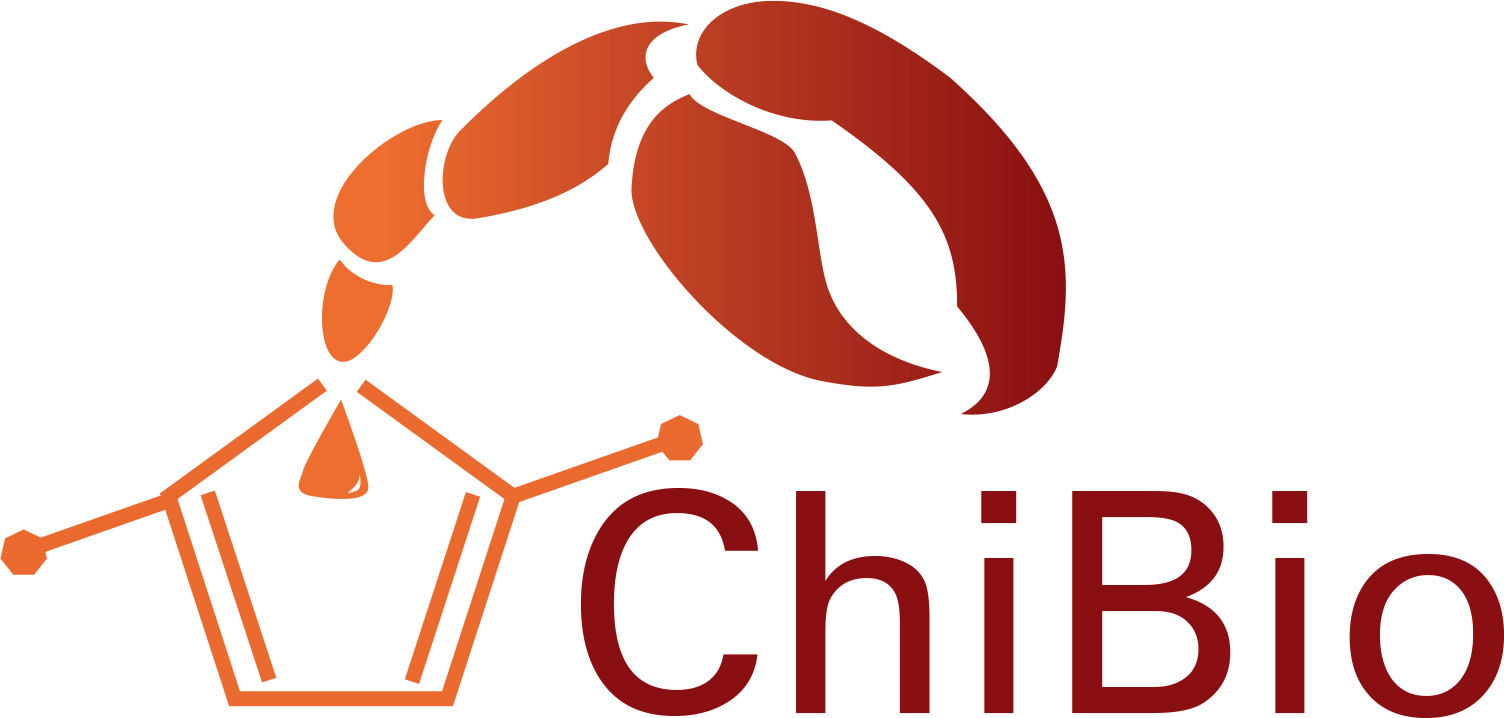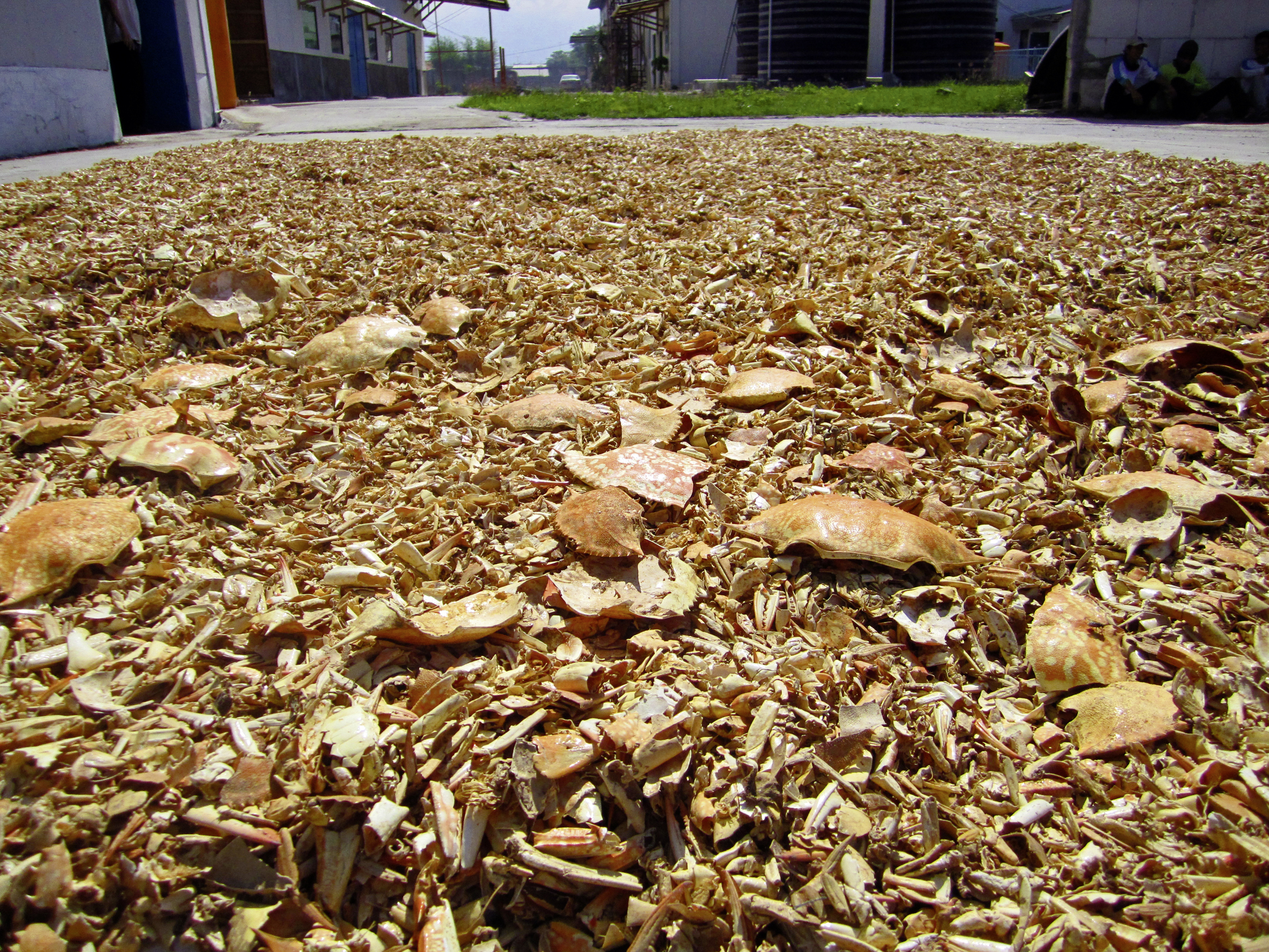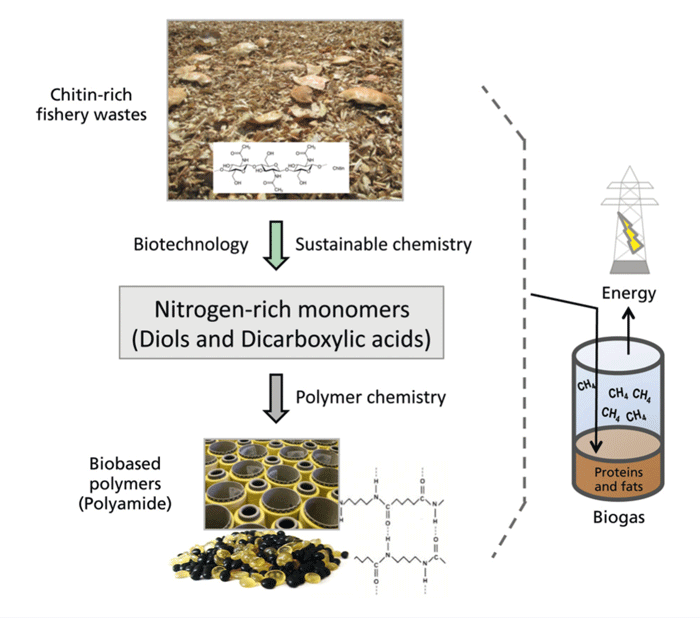Initial situation
The processing of prawns, crabs and shrimps results in the accumulation of large quantities of shell waste that contains chitin. Every year over six million metric tons of these crustacean shells land in the waste, with an estimated several hundred thousand tons of these being within the EU alone [1]. A use has already been found for a small part of this biogenic resource and in Asia, for example, it is utilized for the production of chitosan for the use in biomedical applications or as a food additive [2]. Because of the higher proportions of calcium carbonate, the utilization of European shells is less economical and not very common. Nevertheless, proper disposal of the shell waste – material which poses a contamination risk – is complex and costly owing to EU and country-specific regulations.
Stabilization of the shells and mobilization of Chitin
In a first process step, methods are being developed to pre-treat and stabilize the waste shells thereby making them storage-stable and transportable. A further important process step is the mobilization of chitin, a N-containing biopolymer. ChiBio, under the direction of the Letterkenny Institute of Technology, is developing process solutions for mild (benign) mobilization of the chitin, protein and lipid fractions using sustainable chemical, microbiological and enzymatic methods.
Enzymatic Cleavage of Chitin
A further fundamental process step is the cleavage of the chitin or of the chitosan obtained through deacetylation into its monomeric sugar units N-acetylglucosamine and glucosamine, respecitively. Chemo-catalytic methods used in this context are not particularly sustainable. ChiBio is therefore developing biocatalytic digestion methods and for this purpose is using chitin-degrading enzymes from prokaryotic and eukaryotic organisms such as strains of Trichoderma, Aspergillus, Bacillus and Aeromonas. Of particular use here is the expertise of our Norwegian partner Prof. Dr. Vincent Eijsink (UMB) in dealing with enzymes from the CBM33 family. These enzymes significantly increase the rates of chitin degradation [3], but in some cases still need to be optimized. This work is being complemented by our own chitinases and also chitin-deacetylases at the Fraunhofer IGB in Stuttgart [4]. Intensive work is currently underway to match the enzyme cocktails in the best way possible and to adapt them to industrial process conditions and/or production methods on an industrial scale.
Conversion of glucosamine into N-containing polymers
The degradation products of chitin/chitosan (hydrolysates and monomers) serve as substrates for biotechnology processes for the production of N-containing functional monomers for the polymer industry. N-containing compounds for the production of polyamides and isocyanates are of particular interest for the polymer industry and so far it has not been possible to produce them on the basis of renewable raw materials. ChiBio is taking two different routes here: the Industrial Biocatalysis Working Group at the Technische Universität München under the direction of Prof. Dr. Thomas Brück is developing optimized yeast strains in order to convert the chitin hydrolysates or glucosamine through fermentation into functionalized fats/fatty acids and the corresponding aminocarboxylic acids. In parallel, BioCat is using cell-free biotechnology methods in a multi-enzyme process to produce functionalized heterocycles from glucosamine. A large proportion of the required enzymes is now available recombinantly and is currently being optimized using enzyme engineering methods. The purified products from both routes are then used directly in the polymer industry as bifunctional monomers.
Additional work
Work on efficient purification methods is being carried out by the ChiBio partners Clariant and the Fraunhofer ICT. Polymerization trials, together with characterization of the polymer properties, are being carried out at the laboratories of Evonik Industries AG. Biological by-products that accumulate, such as proteins and lipids, are being tested for their suitability as substrates for biogas generation.

 Fraunhofer Institute for Interfacial Engineering and Biotechnology IGB
Fraunhofer Institute for Interfacial Engineering and Biotechnology IGB

